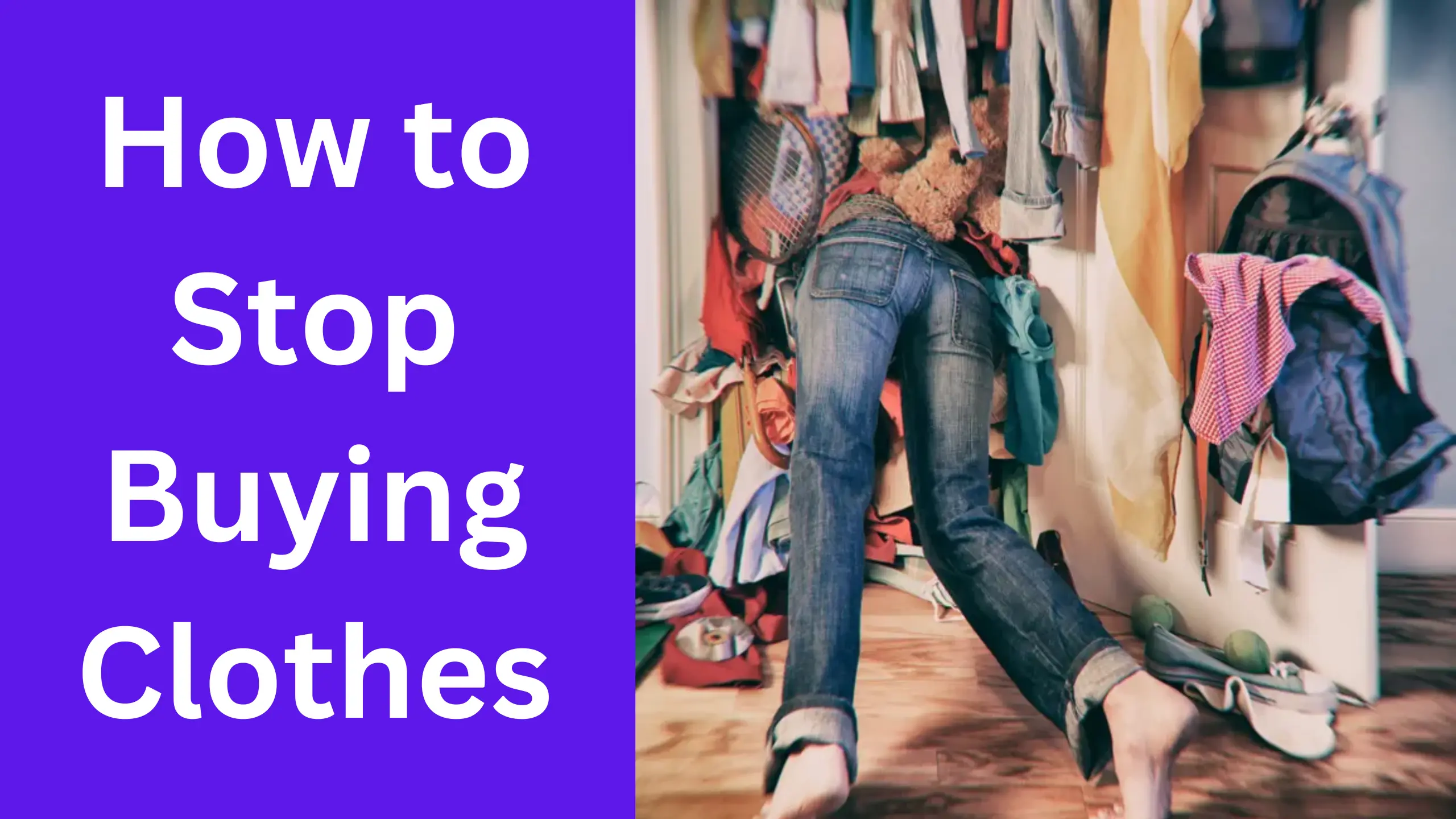Do you find yourself constantly buying clothes even when you don’t need them? Does your wardrobe overflow with items you hardly wear? If yes, then it’s time to take control of your shopping habits and learn how to stop buying clothes. This article will explore 15 actionable tips that will help you break free from the cycle of constant shopping and reduce your environmental impact.
Understand Why You Buy Clothes
Before you can stop buying clothes, it’s important to understand why you do it in the first place. Here are some common reasons people buy clothes:
Emotional shopping
Many people shop to make themselves feel better. It can be a form of stress relief or a way to boost self-esteem.
Social pressure
Sometimes people feel the need to buy clothes to fit in with certain social circles or to keep up with trends.
Boredom
Shopping can be a way to fill time or entertain yourself when you’re bored.
Impulse shopping
Sometimes people buy clothes on a whim without really thinking about whether they need them or not.
Understanding why you buy clothes can help you develop strategies to overcome these triggers and stop the cycle of constant shopping.
Analyze Your Wardrobe
Another key step in stopping buying clothes is to analyze your current wardrobe. Here’s what you should do:
Take everything out
Empty your closet and drawers so you can see everything you own.
Sort your clothes
Separate your clothes into categories, such as tops, pants, dresses, and so on.
Identify your most-worn items
Take note of the items you wear most often and why you like them.
Identify your least-worn items
Take note of the items you rarely wear and why you don’t wear them.
Analyzing your wardrobe can help you understand what you already have and what you actually need, which can help you make better shopping decisions in the future.
Shop Mindfully
If you do need to buy clothes, it’s important to do so mindfully. Here are some tips:
Make a list
Before you go shopping, make a list of the items you actually need.
Set a budget
Decide on a budget for your shopping trip and stick to it.
Choose high-quality items
Invest in high-quality clothes that will last longer and save you money in the long run.
Avoid impulse buys
Think carefully before making a purchase and avoid impulse buys.
Shopping mindfully can help you make better decisions and reduce the amount of money you spend on clothes.
Take Care of Your Clothes
Taking care of your clothes is essential if you want them to last longer. Here’s what you should do:
Read care labels
Always read the care labels on your clothes to ensure you’re washing and drying them correctly.
Mend and repair
If something rips or tears, don’t throw it away. Instead, learn how to mend or repair it.
Rotate your clothes
Rotating your clothes can help them last longer and reduce wear and tear.
Store clothes properly
Store your clothes properly to prevent damage from sunlight, moisture, and pests.
Taking care of your clothes can help you make the most of the items you already own and reduce the need to buy new clothes.
Learn to Say No
One of the most important things you can do to stop buying clothes is to learn to say no. Here are some tips:
Avoid the temptation
Stay away
Unsubscribe from marketing emails
Unsubscribe from marketing emails and newsletters that promote sales and discounts.
Avoid window shopping
Window shopping can lead to impulse buys, so try to avoid it altogether.
Practice delayed gratification
If you see something you like, wait a few days before making a purchase. If you still want it after that time, then consider buying it.
Learning to say no can help you resist temptation and reduce your shopping habits.
Shop Second-Hand
Another great way to stop buying new clothes is to shop second-hand. Here’s why:
It’s better for the environment
Shopping second-hand reduces the demand for new clothes and can help reduce the environmental impact of the fashion industry.
It’s cheaper
Second-hand clothes are often much cheaper than new clothes, which can help you save money.
It’s unique
Shopping second-hand can help you find unique items that no one else has.
Rent Clothes
If you only need an outfit for a special occasion, consider renting clothes instead of buying them. Here’s why:
It’s cheaper
Renting clothes is often cheaper than buying them, especially if you only need them for a short period of time.
It’s more sustainable
Renting clothes reduces the demand for new clothes and can help reduce the environmental impact of the fashion industry.
It’s convenient
Renting clothes can be very convenient, as you don’t have to worry about storing or maintaining them.
Participate in Clothing Swaps
Organizing clothing swaps with friends or in your community can be a fun and sustainable way to update your wardrobe. Here’s why:
It’s free
Clothing swaps are free, so you don’t have to spend any money to get new clothes.
It’s social
Clothing swaps are a great way to socialize with friends and meet new people.
It’s sustainable
Clothing swaps reduce the demand for new clothes and can help reduce the environmental impact of the fashion industry.
Finally
In conclusion, learning how to stop buying clothes is an important step in reducing your environmental impact and saving money. By understanding why you buy clothes, analyzing your wardrobe, shopping mindfully, taking care of your clothes, learning to say no, and exploring alternative options like second-hand shopping, renting clothes, and participating in clothing swaps. You can break free from the cycle of constant shopping and feel good about the clothes you wear.






